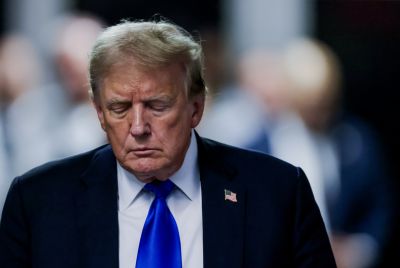German Unity Day 2015: Facts, History About The Berlin Wall On Germany's 25th National Holiday

Saturday is the 25th German Unity Day, the annual celebration of the formal reunification of Germany after years of separation. The public holiday is always recognized on Oct. 3, giving the country's roughly 81 million people time to reflect on their nation's history.
After World War II, Germany was broken into Allied occupation zones under the control of the United States, Britain, France and the Soviet Union. The first three joined their areas into the Federal Republic of Germany, or West Germany, while the Soviets controlled the land around Berlin. The Soviet Union tried to take over the whole city, east and west, but failed in 1949. It continued to run Germany's eastern zone, comprising about one-third of the country; that area was called East Germany, or the German Democratic Republic (GDR), formally established in 1949. Residents of East Germany grew tired of the regime and began crossing into the democratic West in droves, according to the History Channel.
In response, soldiers from the East began construction on the Berlin Wall on Aug. 13, 1961. Officially called the Anti-Fascist Protection Rampart, the wall would eventually stretch about 97 miles and average of 12 feet tall. It was made mostly of cement and barbed wire and separated countless families. Many people who tried to cross over were shot.
In November 1989, after protests by citizens and international leaders, East Germany opened its borders. Berliners tore down the hated wall with their hands, picks, hammers -- whatever they had -- and the two countries formally became one Germany again when they signed a treaty on Aug. 31, 1990. They were officially reunified on Oct. 3 when East Germany was dissolved.
Nowadays, "October 3 is a feast and a picnic," professor and museum worker Tuya Roth told Deutsche Welle. "[Former German Chancellor] Helmut Kohl always emphasized that it is a day in fall with nice weather that can be used by the people as a feast and picnic day."
The location of the German Unity Day festival rotates yearly. This year, Frankfurt will host it with food, beer, live music and dance performances. If you're honoring the observance at home, check out these facts about Germany:
West Germany liked to call the Berlin Wall the "Wall of Shame."
When the wall was built, then-U.S. President John F. Kennedy said, "it’s not a very nice solution, but a wall is a hell of a lot better than a war." Ronald Reagan would later famously demand that statesman Mikhail Sergeyevich Gorbachev "tear down this wall."
While the wall was up, about 5,000 people escaped into West Germany, sneaking through checkpoints, walking through an underground tunnel and even landing in a hot air balloon.
But not everyone made it. At least 171 people died trying to cross.
People who chipped away at the wall after the reunification were called "mauerspecht," or wallpeckers.
Today, Germans have nicknamed their chancellor's building the "washing machine" for its white facade and circular window.
Berlin is about 344 square miles and has a population of more than 3 million people.
The longest authentic German word is "Rindfleischetikettierungsüberwachungsaufgabenübertragungsgesetz," a description of beef labeling laws, until it fell out of use in 2013.
© Copyright IBTimes 2024. All rights reserved.






















